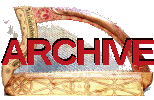
|
|
“ Lyons overheard him composing the tune of Mrs. Archdall; and, as Carolan could not see, Lyons wrote down the music as fast as Carolan composed it „ | |
This early eighteenth century episode, dictated c. 1810 by an elderly blind harper, gives us a tantalising glimpse into something that may have been quite common, but which has not survived: the writings of Gaelic harpers.
We may not be suprised that the harper Cornelius Lyons (c. 1680 - c. 1750), composer of wonderfully baroque variation sets on traditional Irish harp tunes such as "Eibhlín a Rún" and "An Chúileann", should be musically literate. But it is interesting that Arthur O’Neill (1737 - 1816), a blind, illiterate itinerant, would think nothing of a harper writing down music.
In Scotland, the poet, piper and harper William McMurchy (c. 1700 - c. 1770) wrote a significant amount in Gaelic and English in his notebooks, including some comments on harps. Many of his manuscripts are lost; they may have included musical notation.2
Perhaps a glimpse of what may have been lost is given by the related Welsh harp tradition; in c.1623 the harper Robert ap Huw wrote down a significant number of tunes, together with technical information on technique and idiom, much of it apparently dating to late medieval times.3
But despite this, there is an enormous amount of written material relating to the Gaelic harp tradition, because other people did write down what the harpers were doing. Compared to other historical music traditions, they wrote down a lot, both music and descriptions. The problem is that because it was written by people who were not Gaelic harpers, but were reporting what they had seen and heard, it is second-hand information. Moreover, much of what was written down is in English, not the Gaelic or Irish used by the harpers.
It is often not clear, when looking at a Gaelic harp tune in notation, what it represents. It could be an attempt by a conscientious collector to note exactly what was played at a certain performance. It could be a generalised, improved synthesis of an "ideal" rendition of the tune, or it could be re-worked and re-set for another instrument such as piano or violin.
Sometimes a tune has gone through even more transformations - much of the repertory was transmitted by fiddlers or other instrumentalists before it was written down.
I think that the music which was printed - for example in Bunting's published books4, or the collections of Neal5 or Dow6, is the least reliable for us. The consumers of this mass-produced written music were often not Gaelic speaking, and would play it on ordinary European instruments such as piano or harpsichord, and so it is ridiculous to expect it to preserve the orally-transmitted subtleties of Gaelic harp idiom.
We are perhaps most secure with the field notebooks of Edward Bunting7, where he sat beside a harper and notated at high speed the music being played in front of him. The fact that it does differ significantly from his later arrangements for publication may confirm that he was not editing or sanitising the music at this early stage.
But what of the earliest sources - the 17th century Scottish lute books8? The notations in these handwritten books was written by aristocratic lute players, often young and inexperienced. Maybe the tunes are truly lute arrangements, only loosely derived from Gaelic harp originals. But it is possible that they were written by the lutenist from the playing of a visiting harper, preserving the structure and harmonisation used by the harper in that performance9. Comparing such tunes with more cosmopolitan European music found with them in the books may suggest whether this is indeed the case.
All we can do in the end is look at as much of the surviving notation as we can, and compare and contrast it, to try and see the common elements that derive from the Gaelic harp tradition, and try to recognise the changes and additions that accrued as the music passed from performance to paper. But in seeking common elements we must always remember that Gaelic harp music was a diverse living tradition, different in different places and at different times, and always interacting with other music from abroad.
Simon Chadwick